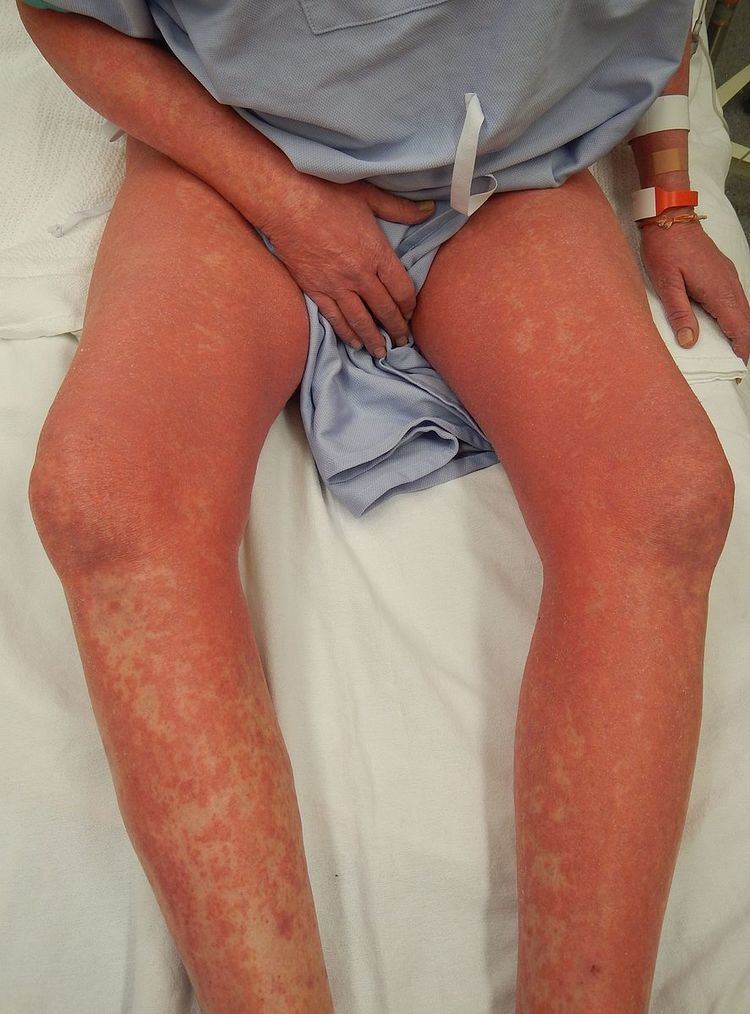Pronunciation /ˌseɪˌzɑːˈriː/ ICD-10 C84.1 ICD-O M9701/3 | Specialty oncology, dermatology ICD-9-CM 202.2 | |
 | ||
Synonyms Sézary's disease, Sézary('s) syndrome | ||
Sézary disease is a type of cutaneous lymphoma that was first described by Albert Sézary. The affected cells are T-cells (so it is a T-cell lymphoma) that have pathological quantities of mucopolysaccharides. Sézary disease is sometimes considered a late stage of mycosis fungoides with lymphadenopathy. There are currently no known causes of Sézary disease.
Contents
Signs and symptoms
Sézary syndrome and mycosis fungoides are T-cell lymphomas whose primary manifestation is in the skin. The disease's origin is a peripheral CD4+ T-lymphocyte, although rarer CD8+/CD4- cases have been observed. Epidermotropism by neoplastic CD4+ lymphocytes with the formation of Pautrier's microabscesses is the hallmark sign of the disease. The dominant symptoms of the disease are:
- Generalized erythroderma
- Lymphadenopathy
- Atypical T-cells ("Sézary cells") in the peripheral blood
- Hepatosplenomegaly
Diagnosis
Those who have Sézary disease often present with skin lesions that do not heal with normal medication. A blood test generally reveals any change in the levels of lymphocytes in the blood, which is often associated with a cutaneous T-cell lymphoma. Finally, a biopsy of a skin lesion can be performed to rule out any other causes.
Treatment
Romidepsin, Vorinostat and a few others are a second-line drug for cutaneous T-cell lymphoma. Mogamulizumab has been approved in Japan and waiting FDA approval in the United States. There are dozens of clinical trials, with a few in Phase III. Treatments are often used in combination with phototherapy and chemotherapy, though pure chemotherapy is rarely used today. No single treatment type has revealed clear-cut benefits in comparison to others, treatment for all cases remains problematic. Stanford University has been pioneering low-dose radiation (1/3 of the standard), followed by stem-cell transplantation without chemo, as a potential cure with promising results.
Some centers view the condition with an holistic approach, testing for infections, food sensitives and other conditions that may trigger disease progression, treating it first before moving to other medications. "[A]ntibiotic treatment for S. aureus infection leads to decreased erythroderma and tumor size without other adjunct treatment."
Epidemiology
Mycosis fungoides is the most common form of cutaneous T-cell lymphoma. In the western population there are around 0.3 cases of Sezary syndrome per 100,000 people. Sézary disease is more common in males with a ratio of 2:1, and the mean age of diagnosis is between 55 and 60 years of age.
